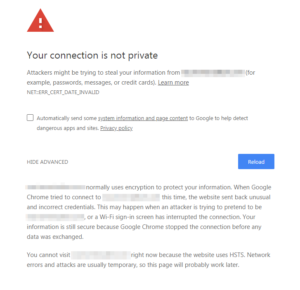As a developer, it is not often that a developer or developer team makes me go WTF, and has me envisioning conducting a test of both electromagnetic repulsion and the Pauling Exclusion Principle using their head and an available desk or wall, but today, the Google Chrome team has done it twice. Congratulations to them for setting several new records (minimum interval between occurrences, and the more than once in a day).
The first item is a common occurrence for me, and can sometimes happen with just a handful of tabs, or it can happen when I am having a tab-crazy day going to sites, opening new tabs to read various pages of documentation, etc. And every other day or so, I pull up the menu, open the task manager, and find one of the browser tasks playing Jabba the Hut, just sitting there big and bloated, slowly laughing at me as it consumes a GB or more of RAM (IIRC, I have seen over 2.1GB, and I only have 4GB of RAM on the machine). Sometimes, it is a task which is handling a site such as Facebook or even gmail, and at other times, it is the main browser task. Indeed, right now, my main browser task is reporting a memory footprint of just over 675MB, and a tab handling Facebook is around 570MB… which is mild. If it is a task other than the main browser task, I will often kill that task, and then reload the tab, but if it is the browser task, I have no option but to enter chrome://restart in the URL bar and restart the entire browser. And while I can open up the developer tools and grab a memory snapshot for the former (if it has not grown too big), there is no such option in the case of the main task. But the thing is, there really should be no reason for a task to grow beyond around the 500MB point, and even then, it should only happen on a site which has lots of media on a very long page (e.g. Facebook). And even then, that is what disk caching is for, and generally indicates some stupid programming error like a memory leak, or just trying to do too damned much in RAM. And, in most cases, one puts in place an adjustable resource limit which says “Nope… free some stuff up first!” when you try to allocate too much. Why Chrome does not have such a process in place, given its nature, is beyond me.
The second item, I hit while working on a script which would allow me to automatically renew the SSL certificates on a NAS appliance I have setup. I had been using CAcert for signing my certificates given they are not charging, much less charging a mint for signing, but there are a few issues with it. One issue is that the folks at Mozilla refusing to add their signing certificates to the trusted list which is used by pretty much everybody. Every time the CAcert folks seem to have addressed issues raised the last time they tried to get added to the list, there always seems to have been a new issue, so that using certificates signed by them require importing their root certificates. While for an internal site, that is no biggie, for an external site, that would mean you having to import those certificates to read this page… big NOPE. The second is that while renewing a certificate is just a matter of going to the website and clicking a button or three, I then have to copy/paste the new certificate and put it where it needs to go. And having to do that every six months for multiple sites/services… Yea… But more about that at the end… in the meantime, what had me once again thinking of taking some developer, PM or suit on the Chrome team, and repeating the test over and over while saying “What… the frell…were you…thinking? Or did…you even…stop to… think about…this possibility??” Google, through their Chrome team, has been driving a HTTPS everywhere initiative, and now, regardless of how a site/program/appliance is configured, Chrome insists on switching over to HTTPS, and provides no way to use the hostname to access it via HTTP. No “Let me do this. Yes, I am sure!” type dialog of any variety, no site setting… nada… just this…
 So, after taking a bit of a break today, when I came back to this to try to debug the program which uses a halfway documented REST API, I could not use Chrome to access the WUI (Web UI), because the certificate had expired, and I use internal subdomains of my domain. Now mind you, I think that the HTTPS Everywhere initiative is the best thing since a meatloaf sandwich, and the work done by the ISRG, EFF, Google and others is great on the whole, but that is like saying someone did a great job at clearing a minefield to turn it into a school playground, when they missed at least one landmine. Worse… this application uses its own internal database to store its configuration, and all configuration is done through that same WUI Chrome is not allowing me to access to update the expired certificate.
So, after taking a bit of a break today, when I came back to this to try to debug the program which uses a halfway documented REST API, I could not use Chrome to access the WUI (Web UI), because the certificate had expired, and I use internal subdomains of my domain. Now mind you, I think that the HTTPS Everywhere initiative is the best thing since a meatloaf sandwich, and the work done by the ISRG, EFF, Google and others is great on the whole, but that is like saying someone did a great job at clearing a minefield to turn it into a school playground, when they missed at least one landmine. Worse… this application uses its own internal database to store its configuration, and all configuration is done through that same WUI Chrome is not allowing me to access to update the expired certificate.
Now, at this point, there are a couple of options…
- Use the numeric IP address. Thankfully, the application for this appliance does not redirect to or rely upon the hostname, like some do.
- Setup and use an address in one of the gTLDs (e.g. the .com, .org, .net, .test, etc. part of the name) which is not forced to HTTPS. I think .test is the one they talk about… but if the app relied on the hostname, how to get in and configure that alternate name??
- Use a different browser. HTTPS everywhere has not made full penetration into the browsers yet… but what happens if this happens a few years down the line?
All in all, it shows a critically major gap when decisions like what Chrome has done do not account for situations like this, and why when applications do not have the means to update configurations from a CLI, that too is a major design flaw.
Now… one last bit, about the certificate issue. To help handle the HTTPS Everywhere effort, folks like the EFF, Mozilla, Chrome and so many others got together to address the issues such as the cost of signed certificates, etc. They have put up the Let’s Encrypt certificate authority, which has the ACME protocol, to make things happen automagically… but not everyone has managed to integrate things yet, and who knows how many appliance applications are either dragging their feet (such as arguing that a given appliance should not be accessible from the public Internet), or have not managed to figure out how to make things work. And until everyone thinks things through 100%, I expect this sort of frustration to become more and more common, unless the browser folks give you the means to say “Yes, I really want to use HTTP and not HTTPS, as risky as that may be” for at least a given session/tab.
